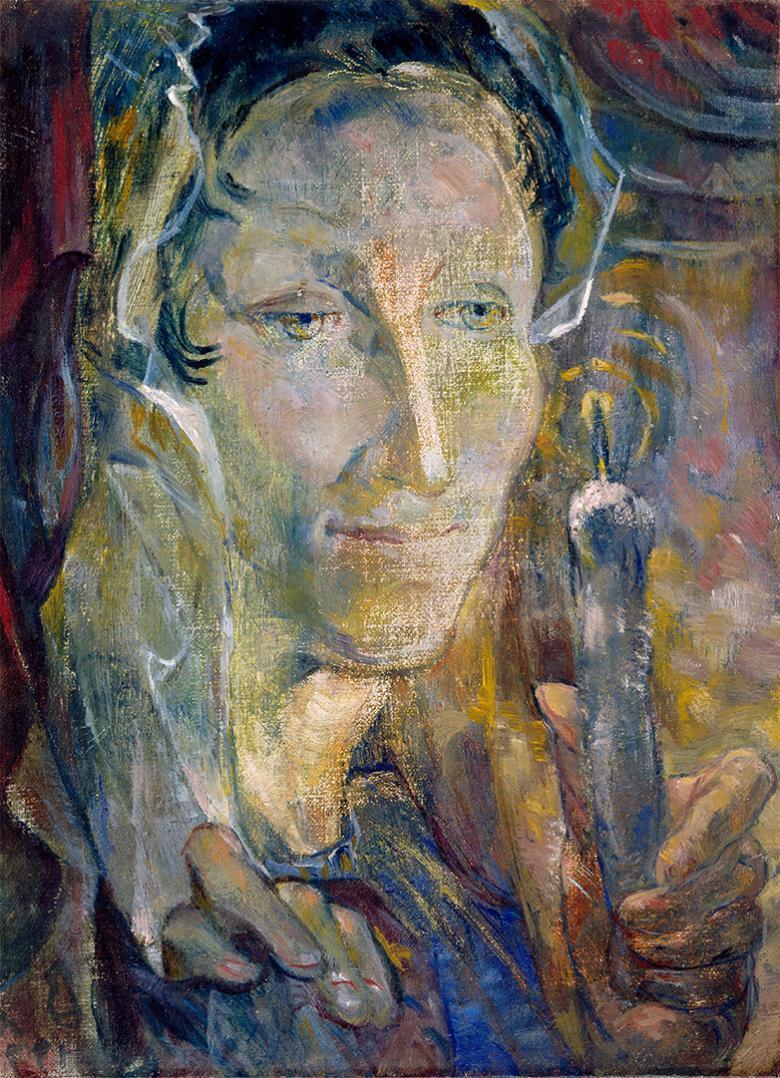“Then, from his place of ambush, God leapt out.” The quote introducing the Sarah Cecilia Harrison Essay Prize winner is bold and powerful, like the essay itself. Although titled ‘In the Mood for God: Colour and Mysticism in the Art of Mary Swanzy’, John Christopher Vaughan’s essay is less a study of Mary Swanzy’s style, and more an attempt to introduce the reader to Swanzy’s unique self.
Sarah Cecilia Harrison was a talented artist, but her legacy comes from her social reform work. She was a suffragette and became the first female city councillor in Dublin. She ran in the same circles as Sir Hugh Lane, and the National Gallery received an archive of over 400 letters between the pair in 2019. Last year, in order to launch this archive, the Sarah Cecilia Harrison Essay Prize was established. The prize showcases essays on the history and legacy of women in Irish visual arts. Chiara Harrison Lambe won the prize last year with an essay on Stella Steyn, an Irish artist. The essay was descriptive of her life, and was meant to showcase the artist’s style. Although quite academic in style, well-written and researched, the form was predictable. This year, John Christopher Vaughan’s essay on Mary Swanzy takes a more creative approach, nearly modelling his writing style after Swanzy’s art.
At first, Vaughan describes being at a loss of how to encapsulate Swanzy in an essay. Initially, his desire was to make the essay difficult to read, an “attempt to develop a cubist form of writing”. It was maximalist, then just a single word. However, then he recalls being drawn to an image of Swanzy fervently contemplating a single grain of rice. She sits at a friend’s dinner table, but is only concerned with studying the rice. “This essay is a portrait, a close reading, an ode”, he said to the National Gallery. “It is my single grain of rice.”
“Details of her come in snapshots, her physical appearance, places travelled — flashes of her life that give us the first glimpse of who she was.”
In the first part of the essay, the picture Vaughan paints of Swanzy feels almost cubic indeed: details of her come in snapshots, her physical appearance, places travelled — flashes of her life that give us the first glimpse of who she was. Considering Mary Swanzy was in her time criticised for having been influenced by too many schools and artistic movements, this approach makes sense. There is no one example of her style, and no single defining characteristic of her, and so Vaughan describes many different examples, which when put together allow the reader to see a complete picture, uniting different artistic styles under one personality.
After describing her tendency to pack up at a moment’s notice and sweep nearby friends on adventures to new places, he writes, “no impression is ever permanent with her, there is only the permanence of impressions.” When understanding this, her drastic style changes seen in her artwork makes more sense. Indeed, Vaughan likens her stylistic evolution to mood changes. “Mary Swanzy had many moods, and they changed, ” he writes. “That is their nature; they go away, and, sometimes, they come back”. It is clear by the tender way Vaughan writes about Swanzy how desperate he is for the reader to understand why he is drawn to her. And indeed, by the end of the essay the reader understands Swanzy’s concentration when perusing her single grain of rice, because, as Vaughan states, “she could paint her way to earlier greens through present rot and mould”. Her sense of adventure, optimism and perseverance shine through in the essay, prompting the reader to seek out her work.
“It is clear by the tender way Vaughan writes about Swanzy how desperate he is for the reader to understand why he is drawn to her.”
Vaughan’s essay can be read on the National Gallery website, and Swanzy’s work can be seen in several venues around Dublin, such as the RHA gallery and the Irish Museum of Modern Art.








